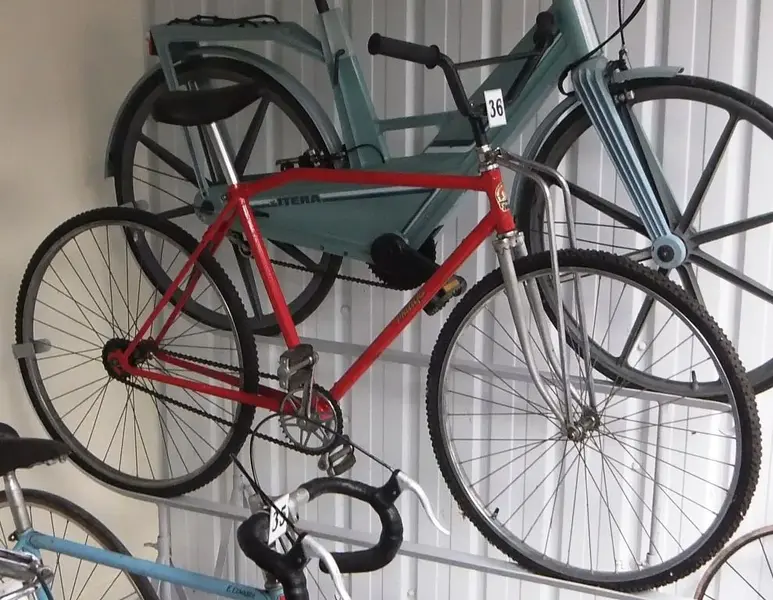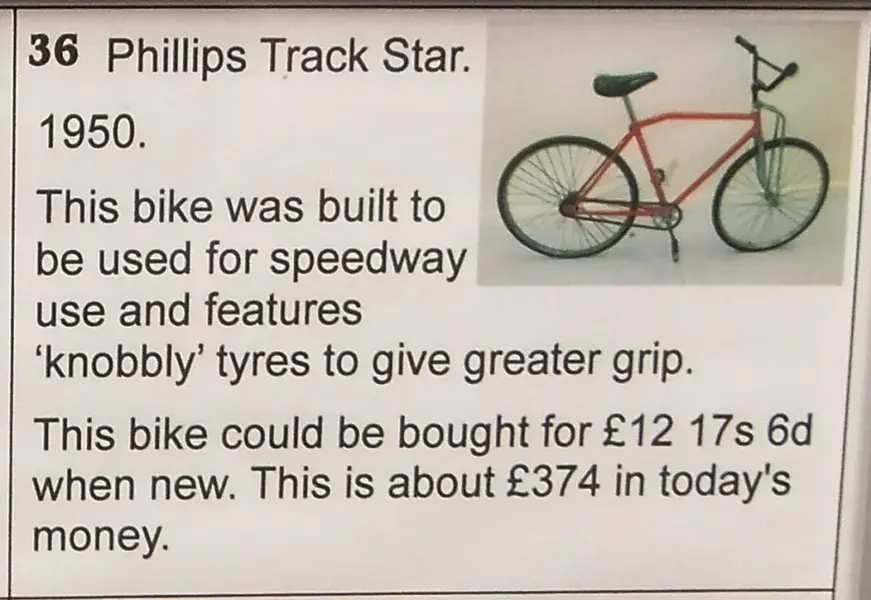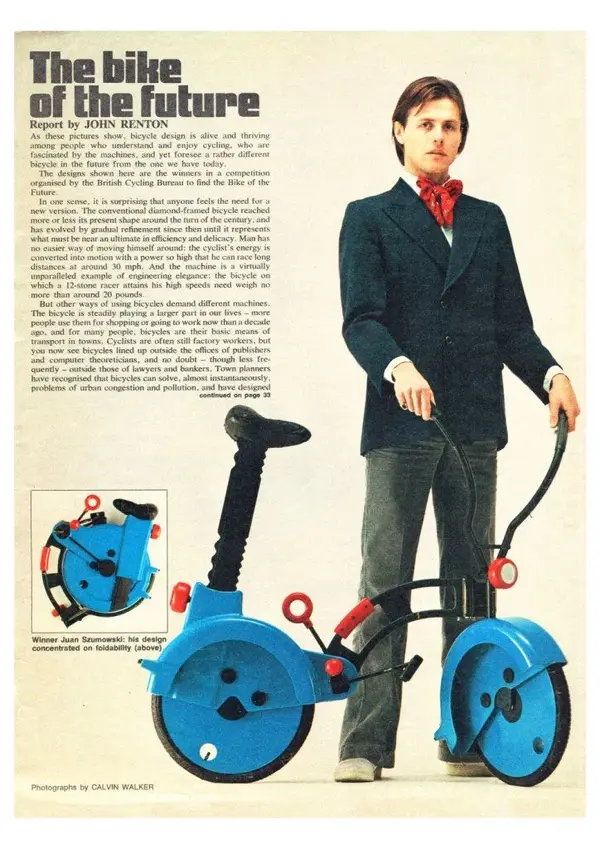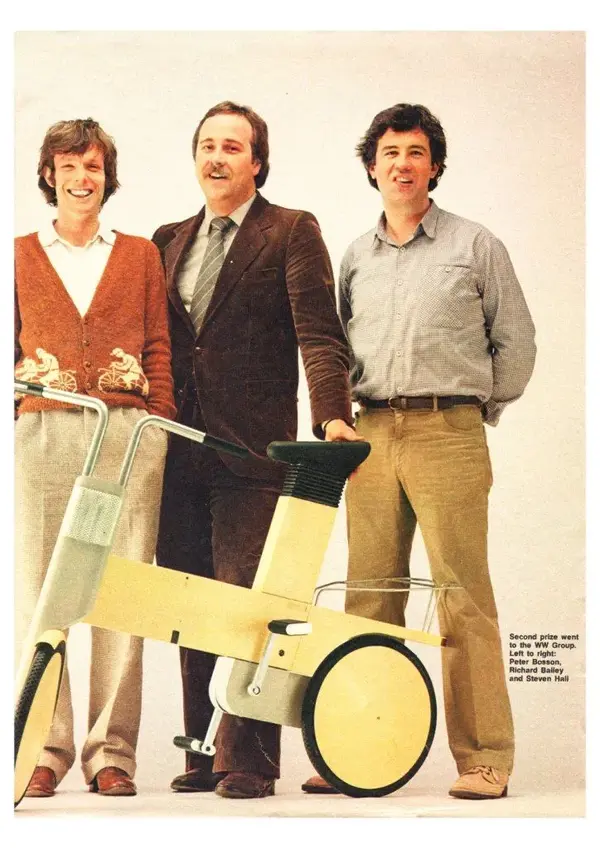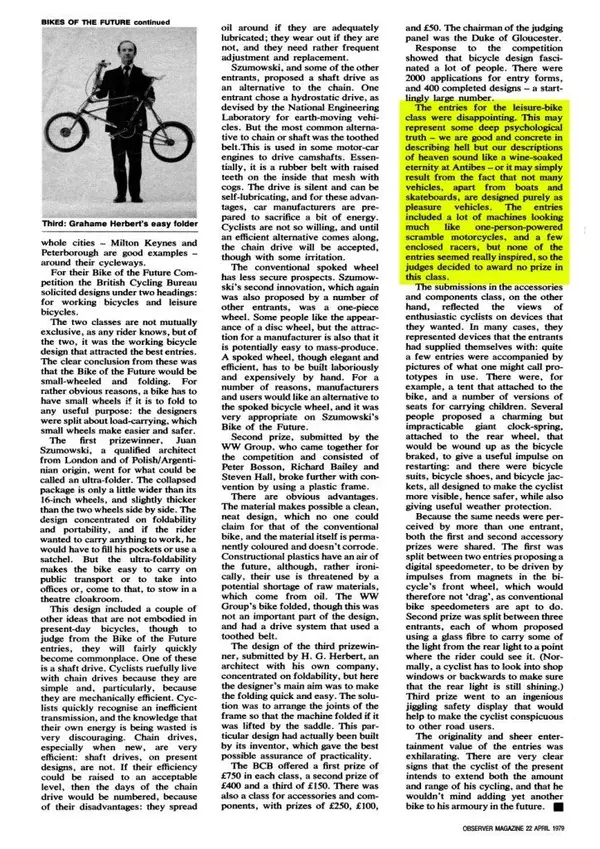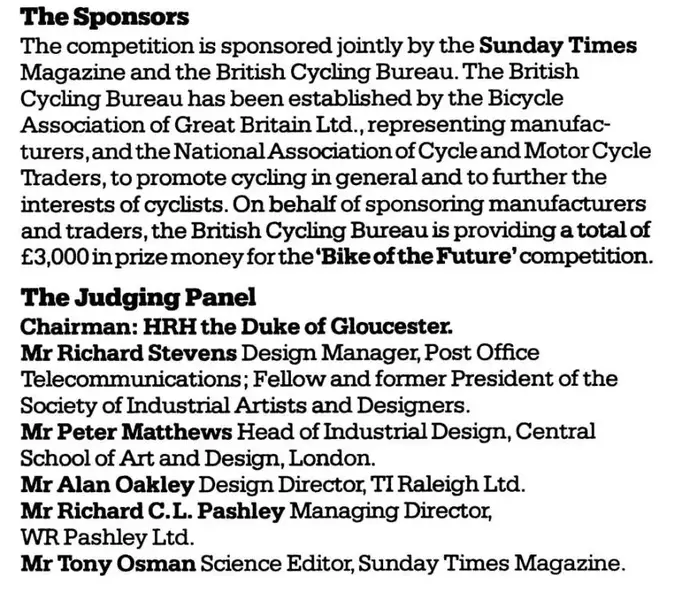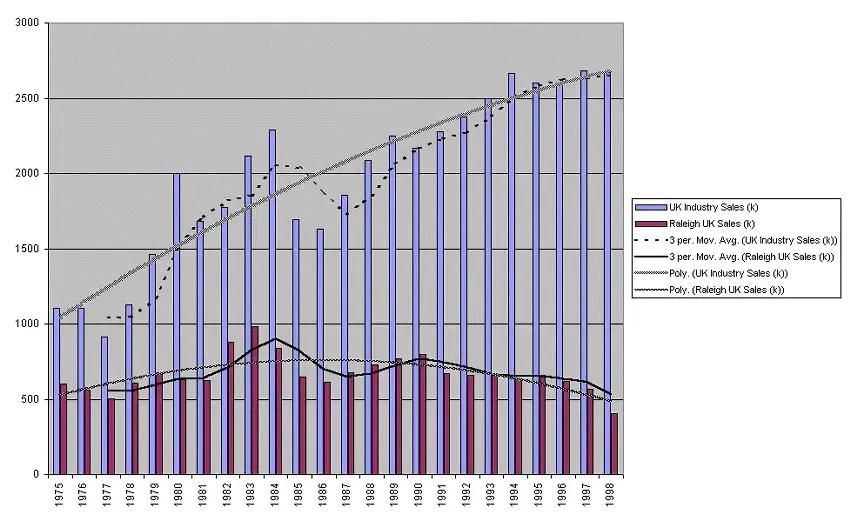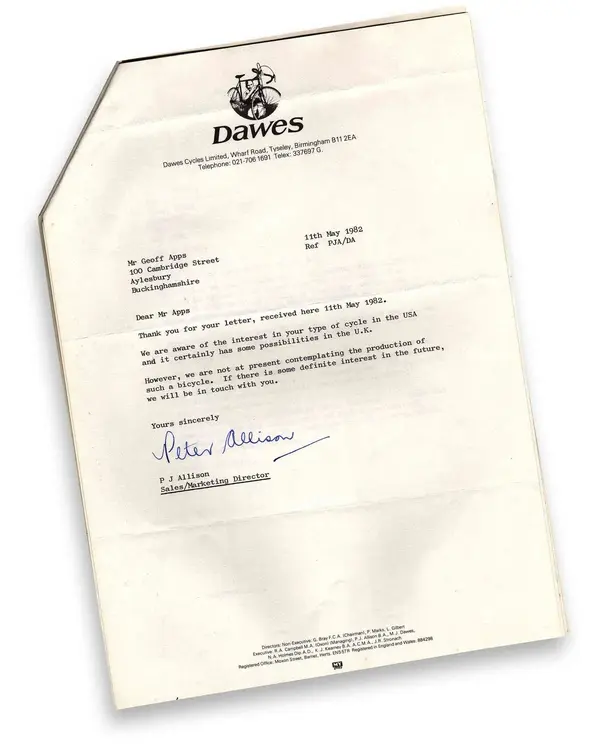In 1978 a nationwide competition to design a 'Bike of the Future' was launched. It was sponsored by the Sunday Times & British Cycling Bureau as representatives of the cycle trade). The competition was open to anyone as long as they provided at least one drawing of their design. The closing date for entry was 29/12/1978.
The entries for this competition included "a lot of designs" for 'Tracker' influenced off-road bikes. Though you wouldn't think so from looking at the competition report below.
In April 1979 the results were published.
So in light of the BMX cycling boom and the Mountain bike boom that happened a decade later how well did the entrants do in correctly predicting the future? Fairly well it seems. The judge’s report says: “The entries included a lot of machines looking much like one-person-powered scramble motorcycles”. What this range of designs looked like we may never know, though below is Geoff Apps' entry.
However, the judges from the great and the good of the UK 1970s cycling establishment didn’t so well in predicting the future. They awarded the top two prizes in the ‘working bicycles category’ to designs of futuristic looking but impractical small wheeled bicycles. Only the third prize winner Graham Herbert‘s ‘easy folder’ being practical enough to ever be produced. And whilst folding bicycles have since become popular this success has been based on the Andrew Ritchie’s 1980’s Brompton concept of folding small yet riding well.
In the ‘leisure bicycle category’, the main area of future growth, the judges decided not to award prizes saying:
“The entries for the leisure-bike class were disappointing. This may represent some deep psychological truth – we are good and concrete in describing hell but our description of heaven sounds like a wine-soaked eternity from Antibes – or it may simply result from the fact that not many vehicles apart from boats and skateboards are designed purely as pleasure vehicles.”
Market Pull
It would seem from this that a sizable number of entrants thought that future leisure cycling would include off-road cycling. History would prove them right as a UK market for adult off-road bicycles developing from 1984 with the introduction of the US mountain bikes. This grew until about 90% of all bikes sold in the UK were mountain bikes around 1995.
Technology-Push
The evidence from history is that there was little interest amongst the UK cycling establishment in the 1960s/70s & early 1980s for developing off-road bicycles and then pushing to create a market for them. Only following the surprise success of the mountain bikes in America were some UK manufacturers like Dawes persuaded to risk making them.
For the judges the very concept of cycling off-road entirely for pleasure, seemed to be an anathema. Later on the UK cycle industry rejected Geoff Apps designs usually saying that they saw no commercial future for such machines.
So the only mass-produced off-road bicycles to be developed from ‘Tracker Bike’ tradition appear to have been the Vindec Trekker, Halfords’ Trackstar, and Raleigh Bomber, etc. All budget low quality bicycles aimed at teenagers.
Though it was to be expected that some ‘Tracker’ bicycle riders would later move onto motorbike scrambling of trials riding, few expected that teenagers would still want to cycle off-road as adults.
Even less that some would still be doing so 40 years on.
UK bike sales showing the increase in sales caused by BMX in the early1980s
and the Mountain bikes (introduced in 1984 but started to sell well from 1987).


